To determine if leather is waterproof, you must first define what "waterproof" ''and water-resistant'' mean. The two terms are often used interchangeably but have two very different meanings. Water-resistant material is usually partially resistant to water penetration but not fully protected against water damage. For example, it can withstand splashes or rain but not prolonged exposure to excess water. On the other hand, waterproof usually means that the material is treated in such a way that it can be submerged in water without any problems or damage. It is important to note that most waterproofing treatments only last a certain time. Leather and water do not mix well, although leather has a degree of natural water resistance. It's okay if it comes in contact with a small amount of water (like light rain), but since natural animal leather is a porous material, it will never be 100% waterproof.  Although we have generally talked about leather and its degree of waterproofness so far, the truth is that it varies depending on the type of leather. It can also be affected by the special treatment the leather receives. Here are some common types of leather and their water resistance ratings. Full-grain and top-grain leather are generally the most waterproof and durable options. They are made from the toughest part (the outer part) of the animal's hide - properties that translate into the final material. In its original state, full-grain leather is not fully waterproof, so treatment sprays and waxes are needed to make it as waterproof as possible. But if a leather product is durable, you can bet it will be made from full-grain leather. So, is artificial leather waterproof? Well, synthetic and faux leather products are plastic and usually waterproof.
Although we have generally talked about leather and its degree of waterproofness so far, the truth is that it varies depending on the type of leather. It can also be affected by the special treatment the leather receives. Here are some common types of leather and their water resistance ratings. Full-grain and top-grain leather are generally the most waterproof and durable options. They are made from the toughest part (the outer part) of the animal's hide - properties that translate into the final material. In its original state, full-grain leather is not fully waterproof, so treatment sprays and waxes are needed to make it as waterproof as possible. But if a leather product is durable, you can bet it will be made from full-grain leather. So, is artificial leather waterproof? Well, synthetic and faux leather products are plastic and usually waterproof.  The most commonly used plastics are PVC and PU, two petroleum-based plastics. However, you can also find eco-friendly alternatives, such as cactus or pineapple peels. Nubuck is full-grain leather that has been treated and polished to give it a unique brushed finish. This gives nubuck leather a fine surface that is more durable than other fine leathers, such as suede. Many hardwearing shoes are made of nubuck leather; they darken when wet but are not permanently damaged by rain. The material is slightly water resistant but requires water repellent spray for extra protection. Unlike the other leathers on this list, suede is more sensitive and prone to water damage. This is because it comes from underneath the hide, which has a weaker grain structure and is, therefore, less robust. Suede is also softened by polishing, lifting the fibers, and explaining the distinctly smooth "velvet" feel we associate with the material. Since suede is not as durable as full-grain leather, it stains and fades quickly. It can also be affected by humidity and humidity in the air, so we recommend that you discard your suede products regularly and take care to use them in bad weather.
The most commonly used plastics are PVC and PU, two petroleum-based plastics. However, you can also find eco-friendly alternatives, such as cactus or pineapple peels. Nubuck is full-grain leather that has been treated and polished to give it a unique brushed finish. This gives nubuck leather a fine surface that is more durable than other fine leathers, such as suede. Many hardwearing shoes are made of nubuck leather; they darken when wet but are not permanently damaged by rain. The material is slightly water resistant but requires water repellent spray for extra protection. Unlike the other leathers on this list, suede is more sensitive and prone to water damage. This is because it comes from underneath the hide, which has a weaker grain structure and is, therefore, less robust. Suede is also softened by polishing, lifting the fibers, and explaining the distinctly smooth "velvet" feel we associate with the material. Since suede is not as durable as full-grain leather, it stains and fades quickly. It can also be affected by humidity and humidity in the air, so we recommend that you discard your suede products regularly and take care to use them in bad weather. 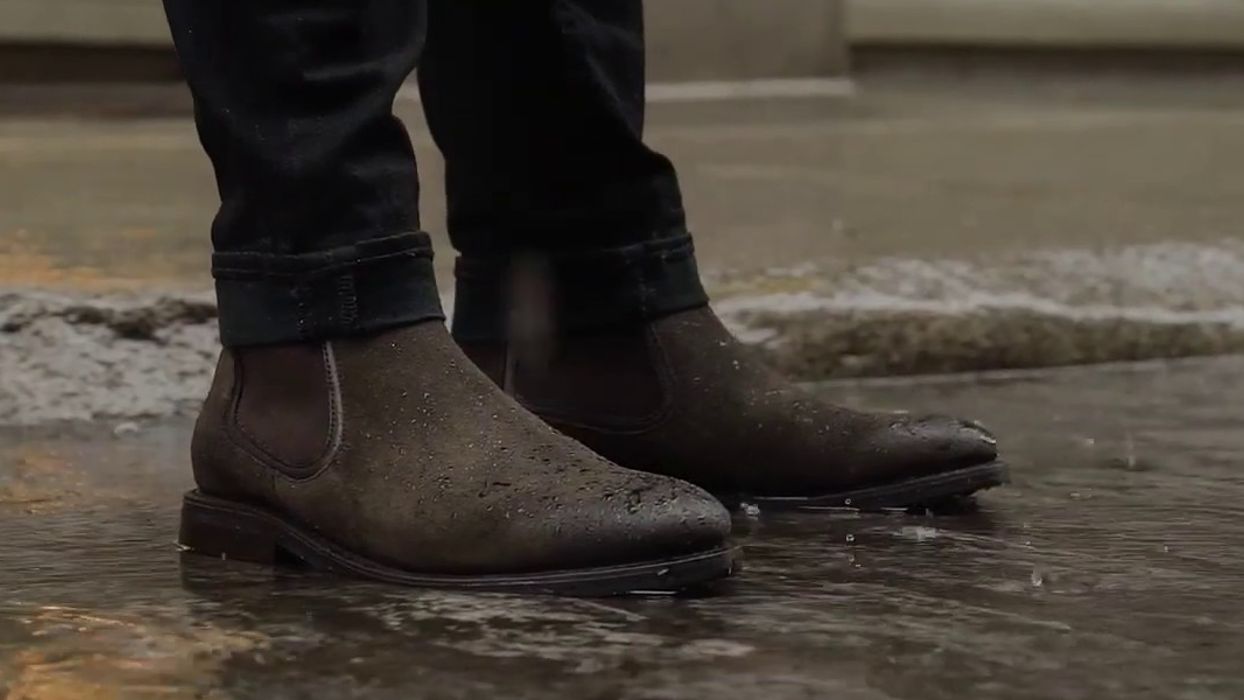
Waterproof leather products
If your leather products get wet, wipe off excess water molecules and allow the product to dry naturally to the slightly damp stage. Please do not assume it is waterproof or leave it to dry out completely, and do not use unnatural heat (such as a hair dryer). When the leather is damp, apply the leather conditioner using a microfiber cloth or soft bristle brush and let it sit for a few hours. The conditioner penetrates the leather through the pores and replenishes evaporated oils. Apply additional conditioner as needed while drying. Water-resistant leather offers various benefits, including keeping your premium top-grain leather wallet or backpack fresh for a long time. In short, when leather is treated with a water repellent, there is less chance of water seeping into the surface and interfering with the natural oils that keep the material soft. This results in a healthier-looking product with a more consistent and natural appearance and texture. 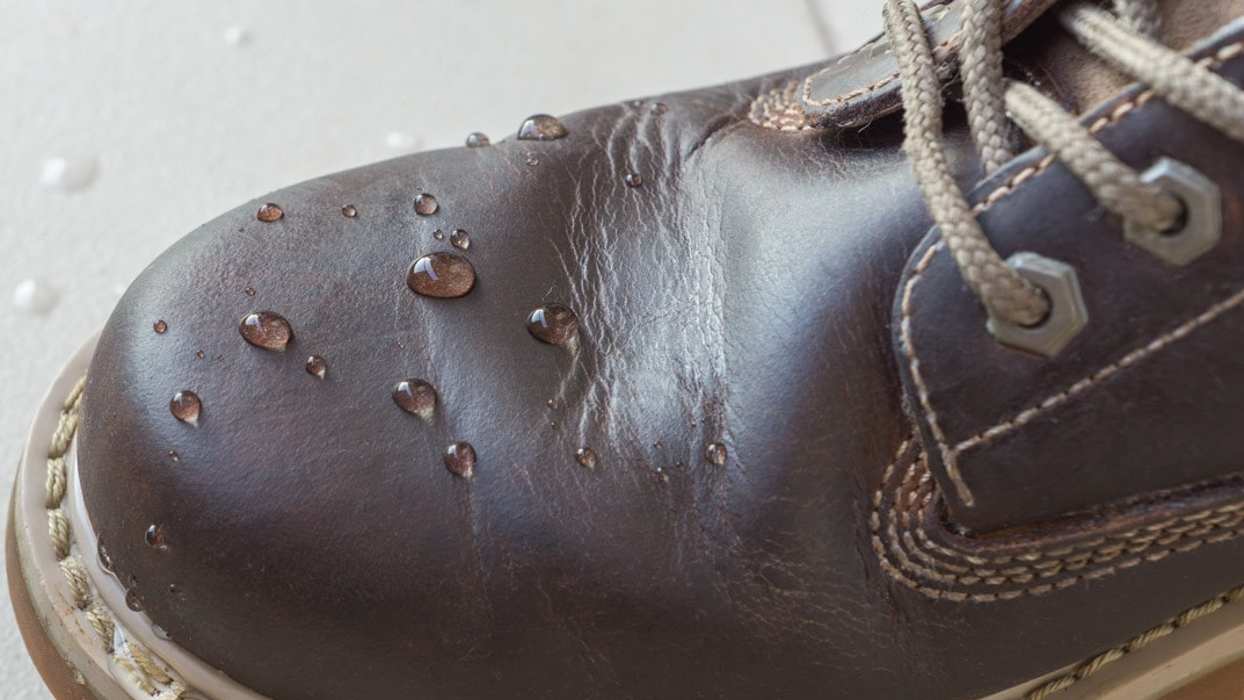 Another benefit of waterproof leather is that it significantly extends the product's life. The protection provided by the water repellent treatment means the leather is less likely to dry out and crack, making it more durable and giving you more wear. Likewise, the risk of your leather accessories rotting is considerably reduced. Finally, you also get better overall weather protection if you waterproof the leather. This is essential for products designed for outdoor use. Get yourself a pair of sturdy leather boots. They may have some water resistance, but the extra treatment will ensure that your feet stay dry at all times, eliminating the effects of bad weather. Are you looking for an effective sealing solution? Let's explore two of the most popular ways to waterproof leather goods to ensure they stay healthy longer. Before you begin, it's important to determine that different types of leather require unique treatments. For example, fine suede is more susceptible to water damage than other harder leathers, so a stronger water repellent treatment is recommended. Excessive exposure to water can make the material wet due to the permeability of the leather. When the water evaporates, the fibers dry out. This explains why the leather ends up being hard when water is splashed on it. Leather also tends to rot if the water doesn't dry fast enough, as the fibers weaken and separate more easily due to the lack of natural lubricants. These weakened fibers are responsible for the appearance of dry rot in the leather, which cracks and sometimes tears a little. We also recommend testing any treatment before fully applying the hidden part of the leatherwork; this way, you can determine if the treatment is causing unwanted spots.
Another benefit of waterproof leather is that it significantly extends the product's life. The protection provided by the water repellent treatment means the leather is less likely to dry out and crack, making it more durable and giving you more wear. Likewise, the risk of your leather accessories rotting is considerably reduced. Finally, you also get better overall weather protection if you waterproof the leather. This is essential for products designed for outdoor use. Get yourself a pair of sturdy leather boots. They may have some water resistance, but the extra treatment will ensure that your feet stay dry at all times, eliminating the effects of bad weather. Are you looking for an effective sealing solution? Let's explore two of the most popular ways to waterproof leather goods to ensure they stay healthy longer. Before you begin, it's important to determine that different types of leather require unique treatments. For example, fine suede is more susceptible to water damage than other harder leathers, so a stronger water repellent treatment is recommended. Excessive exposure to water can make the material wet due to the permeability of the leather. When the water evaporates, the fibers dry out. This explains why the leather ends up being hard when water is splashed on it. Leather also tends to rot if the water doesn't dry fast enough, as the fibers weaken and separate more easily due to the lack of natural lubricants. These weakened fibers are responsible for the appearance of dry rot in the leather, which cracks and sometimes tears a little. We also recommend testing any treatment before fully applying the hidden part of the leatherwork; this way, you can determine if the treatment is causing unwanted spots. 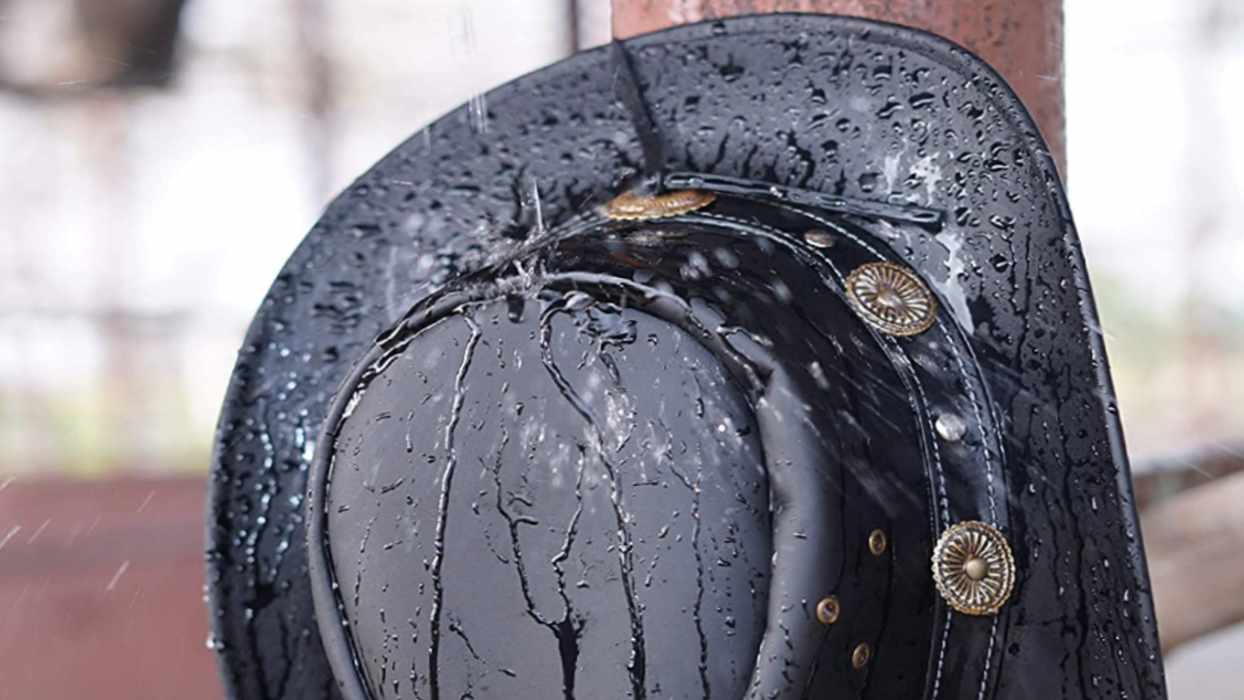
Waterproof leather
A common way to waterproof leather and keep it soft and supple is to use a homemade leather wax. It's easy to do, and with a little effort, you'll save time and money in the long run. You can also buy leather wax. If you already have one, skip stepping four, where you will learn how to apply it correctly. To make the wax, you will need a clean cloth, cold water in a medium saucepan, a glass jar, beeswax (2 oz), and extra virgin olive oil (1 cup). Start by adding the ingredients to a clean glass jar. First, pour in the olive oil, break the beeswax into small pieces, and put them in the jar. Next, slightly heat a pot of water on the stove. Place the glass jar in the saucepan and start stirring the mixture. The heat melts the beeswax into the olive oil. Keep stirring until the wax mass is completely incorporated into the oil. 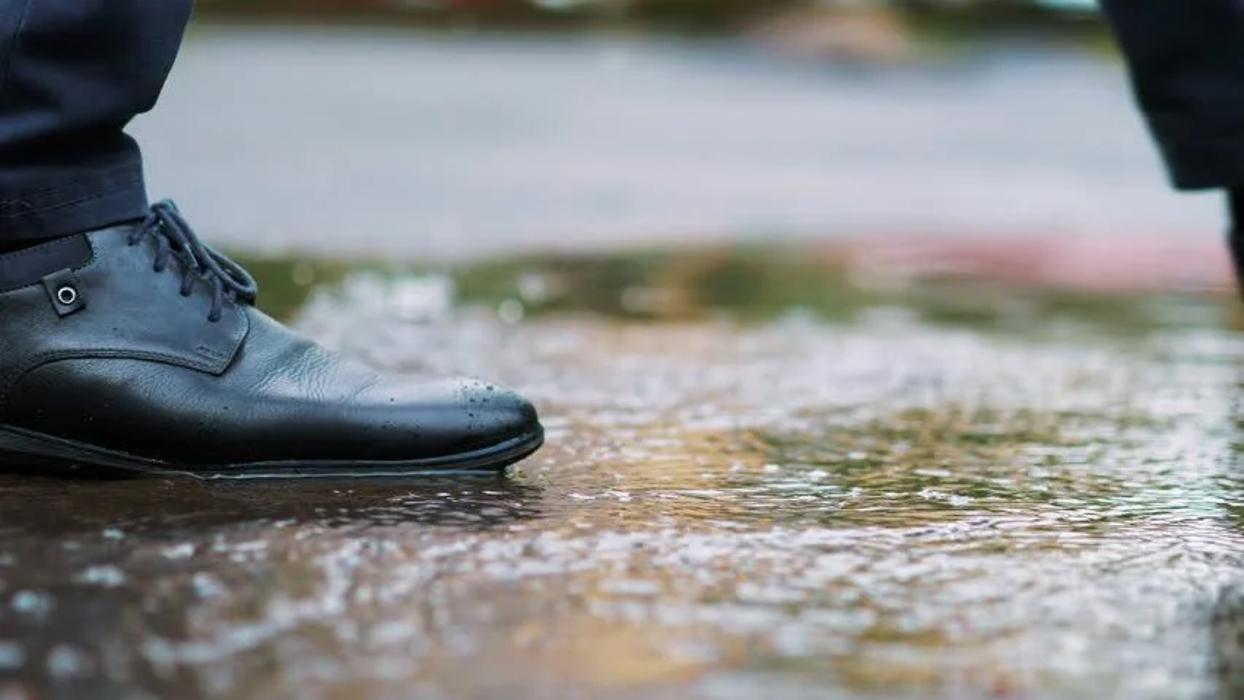 Remove the pan from the heat and the pot from the water. You must keep stirring the mixture as it cools and hardens to ensure the ingredients are well blended. The cooling process can take 10-20 minutes, so take your time to make sure the beeswax is well mixed. Clean your leather product thoroughly to ensure no dirt gets trapped when you start adding wax to the surface. Once the mixture has cooled, test a small section of the leather. If no stains remain, start applying the wax and buff the surface lightly with a polishing cloth. Apply a small amount of wax to the cloth and gradually increase the amount needed to cover the surface of the leather item. Waxes leave a greasy film, so apply them sparingly. Let the product sit for 30-60 minutes for the wax to soak in. Repeat the previous step 2-3 times to form multiple layers of protective coating. When finished, wipe the surface with a dry cloth to remove excess wax. Repeat this process several times yearly to ensure that your leather goods remain waterproof.
Remove the pan from the heat and the pot from the water. You must keep stirring the mixture as it cools and hardens to ensure the ingredients are well blended. The cooling process can take 10-20 minutes, so take your time to make sure the beeswax is well mixed. Clean your leather product thoroughly to ensure no dirt gets trapped when you start adding wax to the surface. Once the mixture has cooled, test a small section of the leather. If no stains remain, start applying the wax and buff the surface lightly with a polishing cloth. Apply a small amount of wax to the cloth and gradually increase the amount needed to cover the surface of the leather item. Waxes leave a greasy film, so apply them sparingly. Let the product sit for 30-60 minutes for the wax to soak in. Repeat the previous step 2-3 times to form multiple layers of protective coating. When finished, wipe the surface with a dry cloth to remove excess wax. Repeat this process several times yearly to ensure that your leather goods remain waterproof. 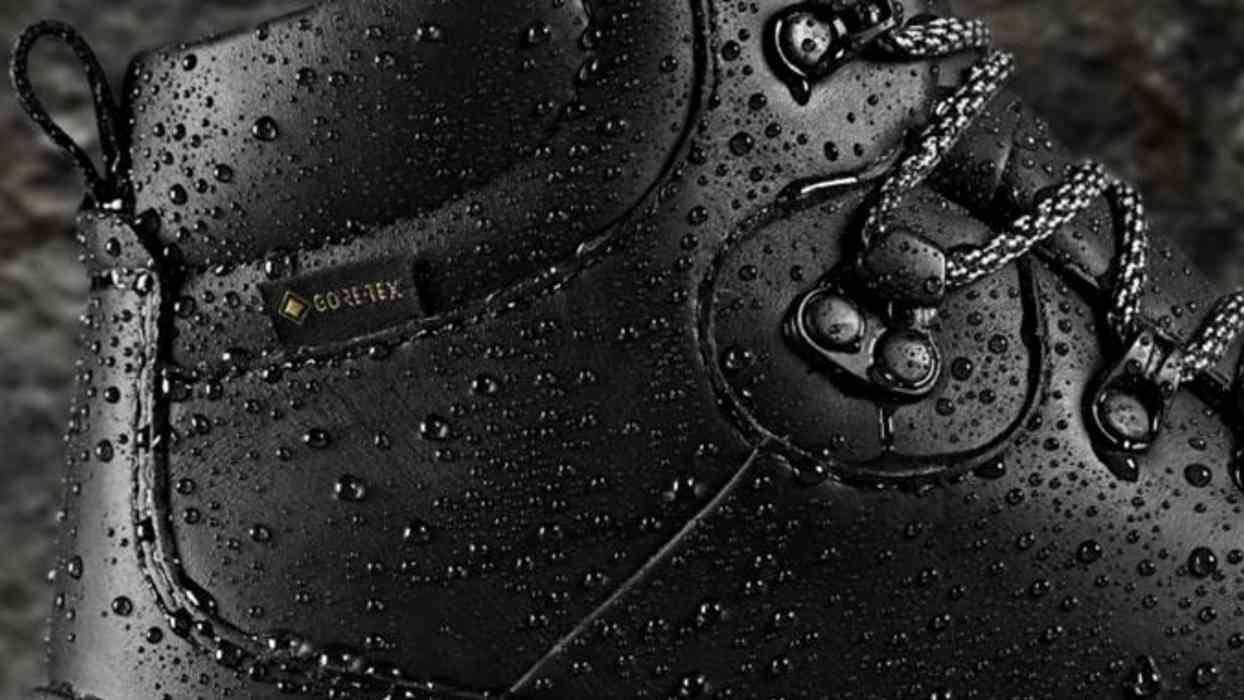 An alternative to waxing is a waterproof spray. These sprays are generally suitable for different types of leather, such as everyday leather, suede protector, and full grain leather spray. Make sure your product is treated properly by researching what type of leather it is made from. A waterproofing spray works by coating the surface with a coating that seals out any moisture. This prevents the leather from losing its softness and drying out. These sprays can be easily purchased online. Again, do a patch test to ensure the spray isn't heavily soiling the surface. When waterproofing precious leather products, it is important to know what type of leather they are made of to find the best waterproofing solution. Whether you want to protect delicate suede or rugged full-grain leather, follow our simple steps to get waterproof protection.
An alternative to waxing is a waterproof spray. These sprays are generally suitable for different types of leather, such as everyday leather, suede protector, and full grain leather spray. Make sure your product is treated properly by researching what type of leather it is made from. A waterproofing spray works by coating the surface with a coating that seals out any moisture. This prevents the leather from losing its softness and drying out. These sprays can be easily purchased online. Again, do a patch test to ensure the spray isn't heavily soiling the surface. When waterproofing precious leather products, it is important to know what type of leather they are made of to find the best waterproofing solution. Whether you want to protect delicate suede or rugged full-grain leather, follow our simple steps to get waterproof protection.

0
0